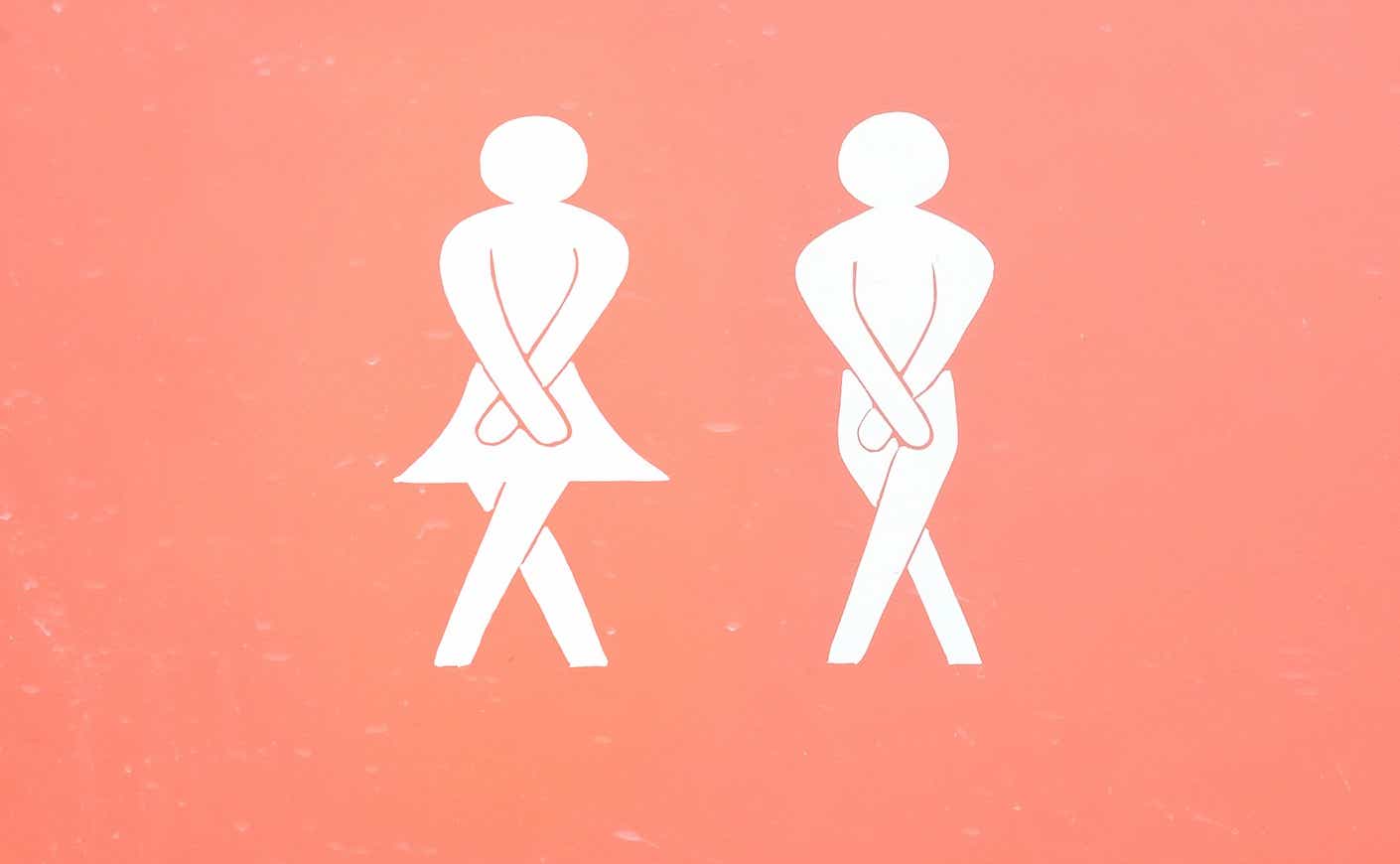Have you ever laughed so hard that you peed a little? Maybe the amusement was triggered when your friend regaled you with their own inconvenient leakage tale, and then that chuckle led you to a similar trickle.
We’ve all been there, and in many cases, you can chalk it up as one of the weird wonders of aging. It’s a nuisance (and an expense — leakproof undies don’t come cheap!) but it could also be a symptom of potentially a bigger issue.
Urinary incontinence (UI) is when someone can’t control their bladder and they accidentally leak urine onto themselves. As embarrassing as this can be, it’s more common than you might think. In fact, the National Association for Continence estimates that more than 25 million Americans experience temporary or chronic urinary incontinence. So if you’ve experienced such a mishap, you’re not alone.
While UI can occur at any age, it’s more common among women over 50. In fact, Rebecca Brightman, MD, our resident women’s health expert (and Katie’s very own OB-GYN), says women are twice as likely to experience incontinence compared to men for a number of reasons.
“Damage to the pelvic floor due to pregnancy and childbirth, as well as menopausal changes, may be contributing factors,” she tells us.
We asked Dr. Brightman all of the questions you might have about UI. For more on menopause insight straight from the expert, be sure to catch up on her latest conversations with Katie.
What are the main types of incontinence?
There are a couple of different types, but Dr. Brightman says the most common one is stress incontinence. This happens when you do some sort of physical activity — such as coughing, laughing, sneezing, or running — and that puts pressure on your bladder, causing you to leak urine.
Urge and overflow are also pretty prevalent, according to Dr. Brightman. While urge leads to a sudden need to urinate followed by an accident, overflow typically happens when you experience a constant trickling of urine due to a bladder that hasn’t been emptied completely.
But there might not be any one cause “Many people have mixed types of incontinence,” she tells us. “For example, many people experience urge incontinence — the need “to go” — along with stress incontinence or the loss of urine with a sneeze or a cough.”
What causes incontinence?
On top of factors like childbirth and menopause, women are more predisposed to getting incontinence just because of the way the female anatomy is shaped. But, according to Medical News Today, men who have prostate gland problems should keep in mind that they’re at an increased risk of incontinence too.
Age is another one because as you get older the muscles in your bladder and urethra lose some of their strength, making them harder to control. Dr. Brightman adds that neurological disorders, such as multiple sclerosis or stroke, can lead to the loss of bladder control because of disrupted communication between the brain, bladder, and bowel muscles.
While you can’t exactly help risk factors like age or sex, there are some that you do have more control over. For instance, being overweight can lead to a greater chance of becoming incontinent because extra pounds can put additional pressure on your bladder and weaken it. “Some women could have significant symptoms of stress incontinence and then all of a sudden they lose some weight and it can get better,” Dr. Brightman says.
Other causes could be urinary tract infections (UTIs) and even some medications like sleeping aids and diuretics.
Are there any incontinence treatments?
While the short answer is yes, this depends on a number of factors: The type of incontinence, your age, general health, and mental state will all play a role. But the good news is that stress incontinence is not only the most common, but it’s also the most treatable thanks to physical therapy. For instance, pelvic floor exercises or physical therapy can strengthen the muscles that help control urination.
There are also different types of medications that are typically used along with these exercises, such as anticholinergics and topical estrogen. While each of these can have a different effect, Dr. Brightman says they essentially “calm down the bladder and relax the bladder muscle, so the amount of urine that your bladder can hold increases.”
What about surgical intervention?
In some cases, surgery is necessary, especially among women who have had children, and there are a couple of different options. For example, there are sling procedures where mesh is inserted under the neck of the bladder to help support the urethra and stop urine from leaking out. There’s also something known as colposuspension, which involves lifting the bladder neck to help relieve stress incontinence.
But Dr. Brightman says that opting for surgery is usually a last resort after therapy and medications.
“For many women doing things like doing pelvic floor exercises and things that work on core strength also help with stress incontinence, but not exclusively,” she explains. “Sometimes, especially after childbirth, people may need surgical repair. Or they may opt to do pelvic floor physical therapy initially and then if it doesn’t work after a period of time, opt for surgical intervention.”
The bottom line
Incontinence can be a mortifying and uncomfortable experience, but Dr. Brightman says that embarrassment shouldn’t prevent you from seeking help from a medical professional to determine the best solution for you.
“The way I look at it is, does it interfere with the quality of someone’s life? If it does, that should help you decide what to do,” she says.









